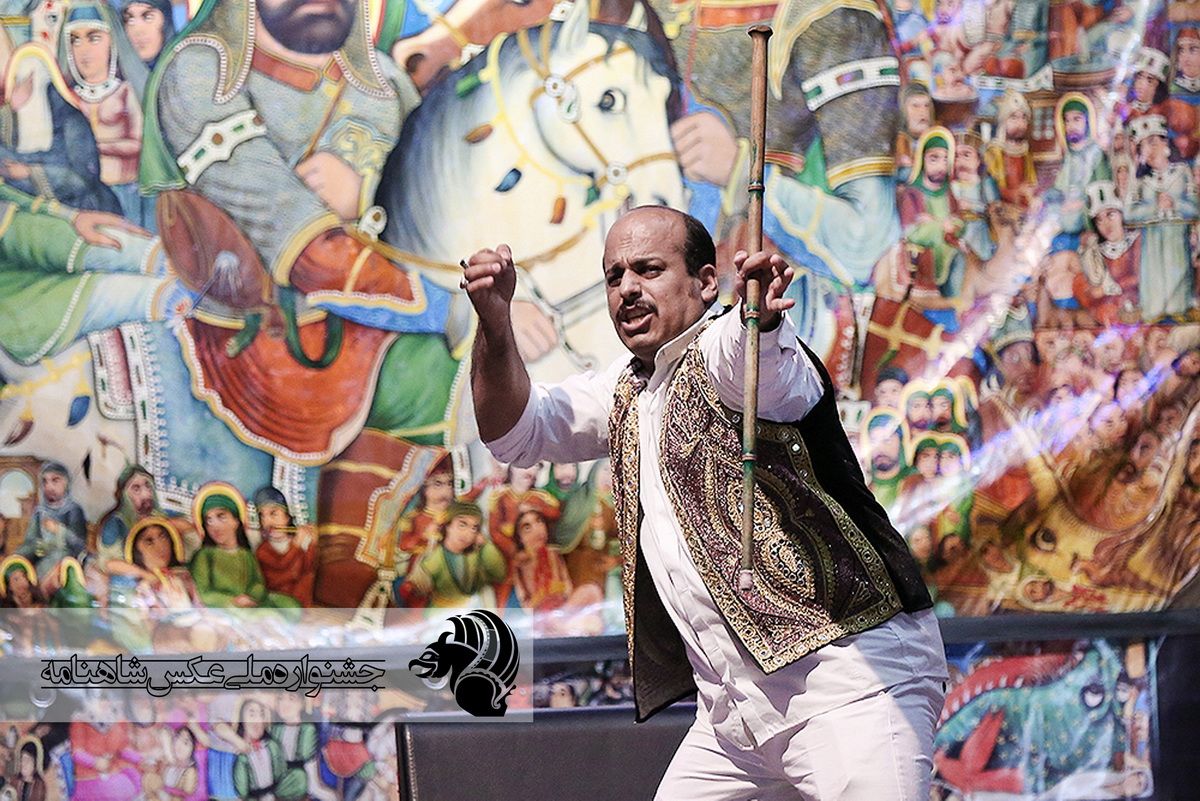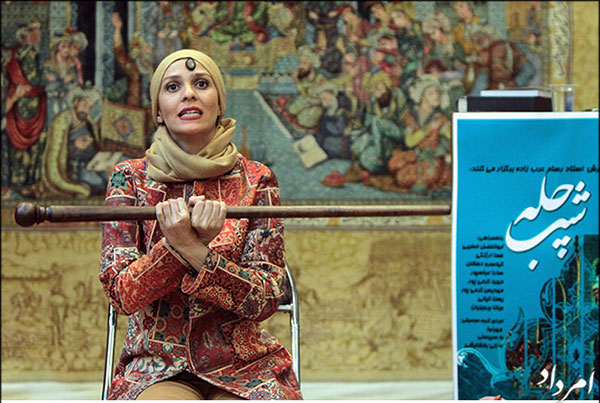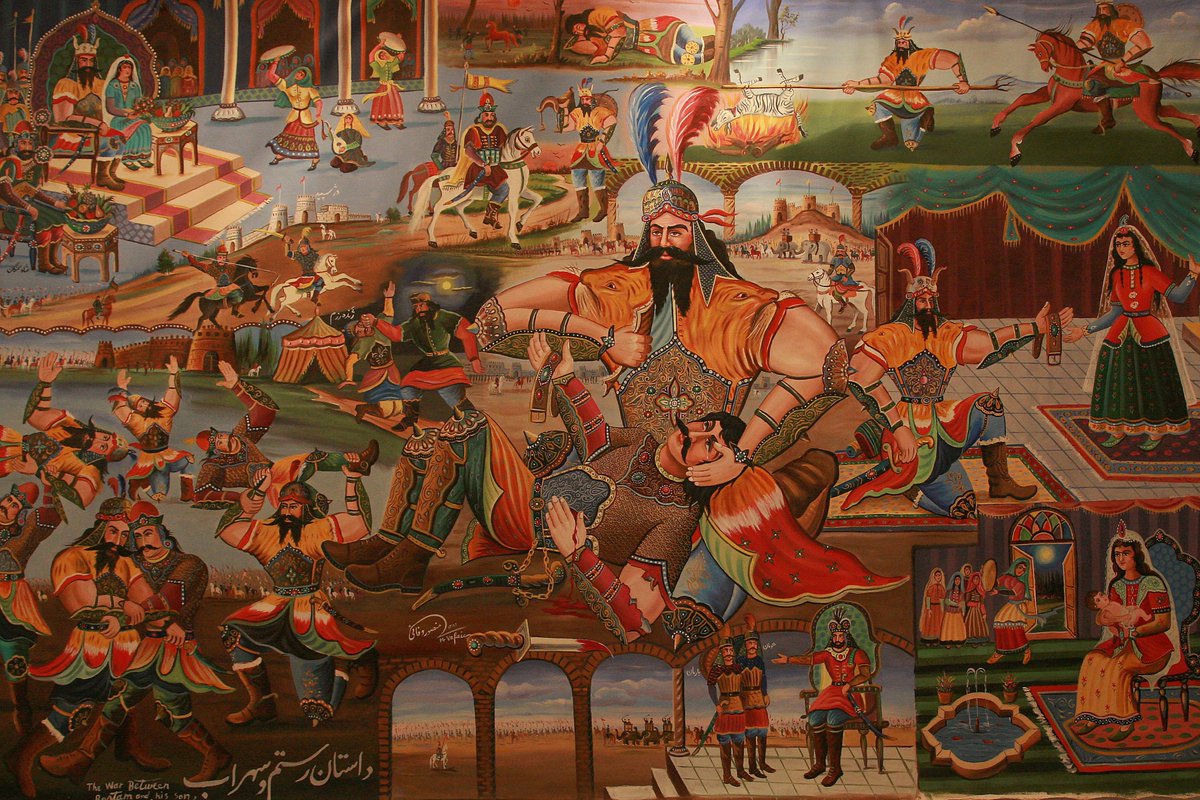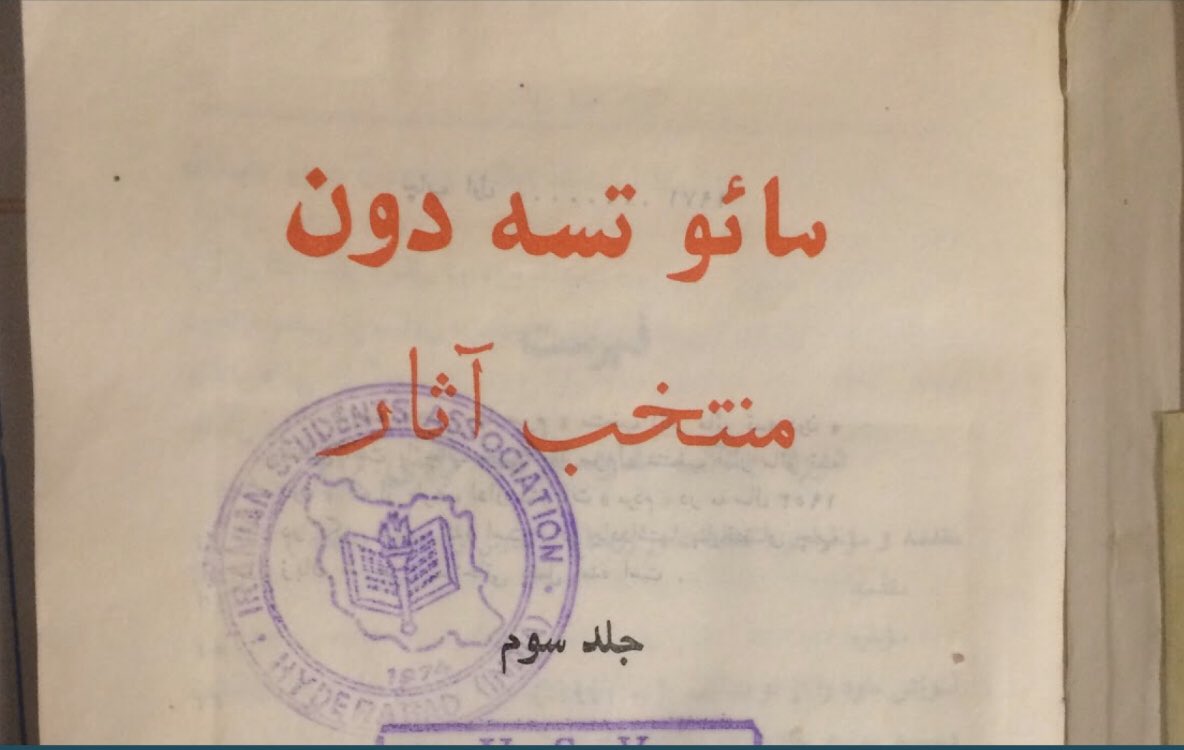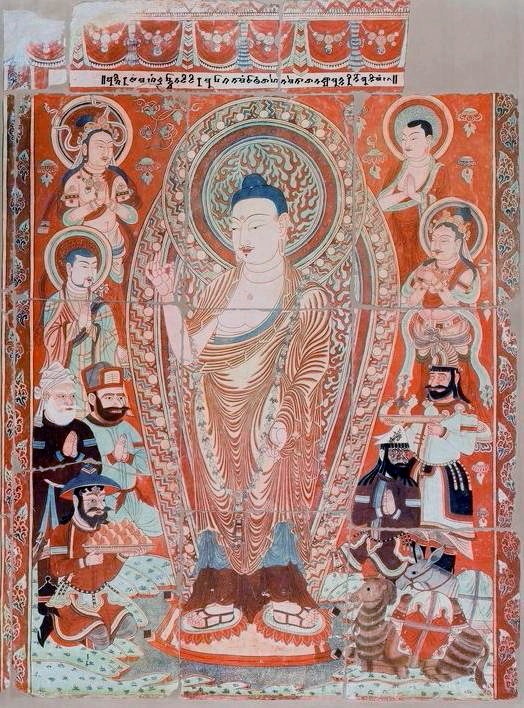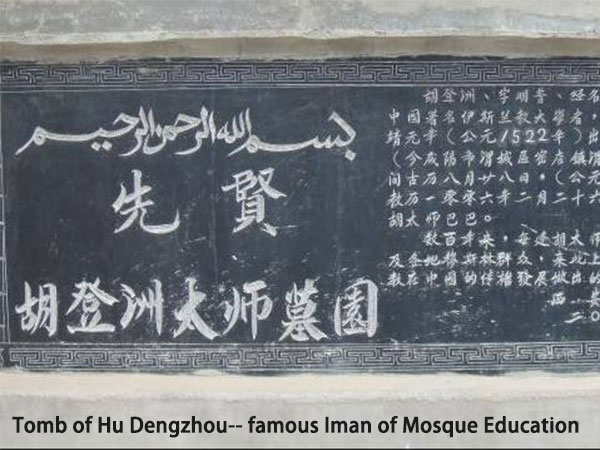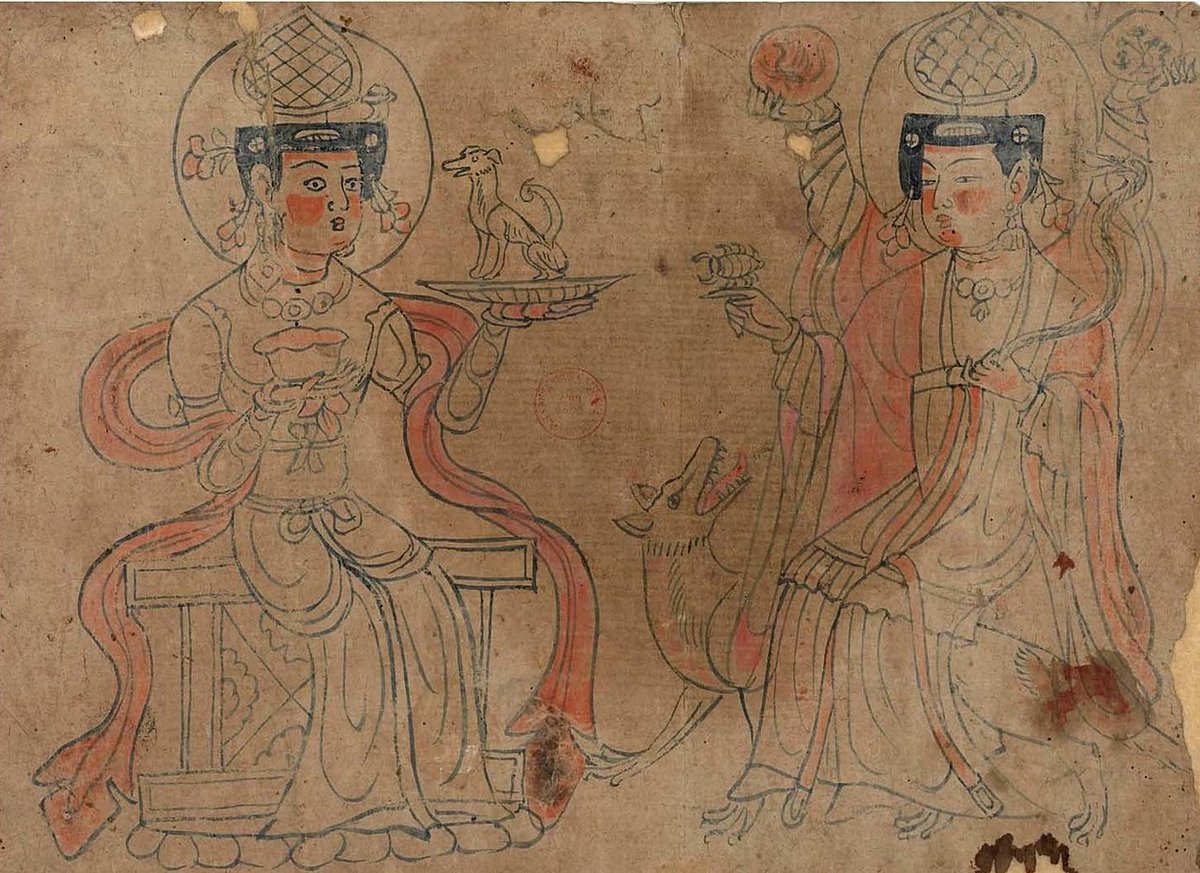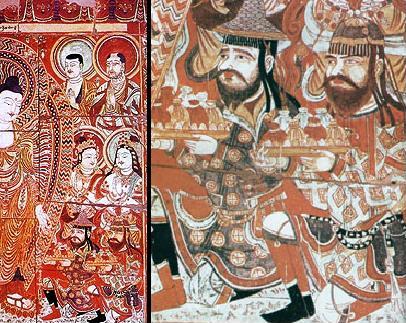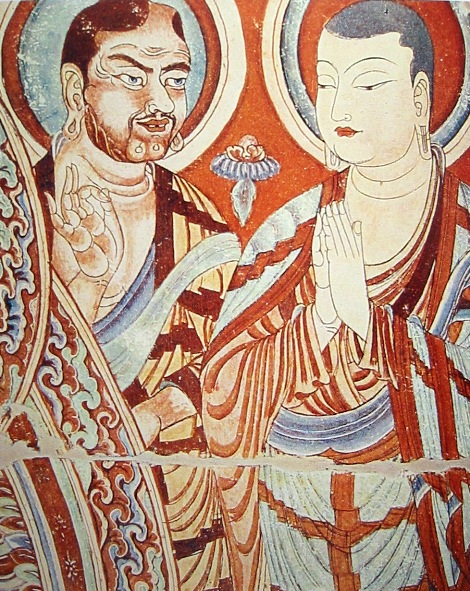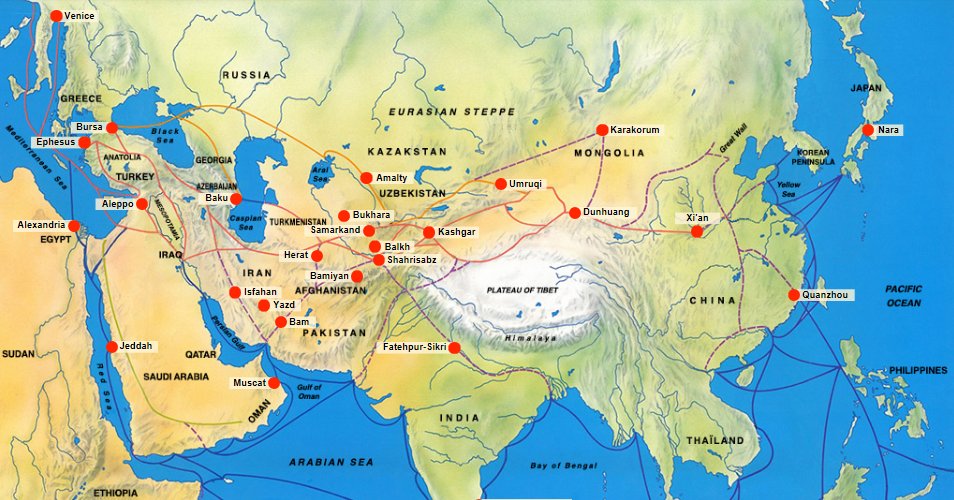
As promised, tonight I'll talk about religious storytelling or Pardeh Dari with a focus on Pardeh paintings. This is Golnar Touski, tweeting from Historians of Iran./1 @GolnarNemat
While reenactment and recitation of Shi’a tragedies were established by Safavid rulers (1501-1736) the practice gained popularity in Qajar Persia where Tekieyeh (تکیه) was a place of congregation for religious ceremonies. Here's a painting of one by Kamal al-Molk./2 @GolnarNemat 

The stories were taken from existing Safavid literature of martyrology such as Rowzat-Al-Shohada or Toufan al-Boka. In Qajar Persia these were reproduced as lithographed books. In fact, emergence of printing was partly responsible for Pardeh./3 @GolnarNemat 

So, because Pardeh Dari was mainly about tragedy, it was accompanied by singing lamentations or Rowzeh, another Safavid tradition. It revolved around a particular day in early history of Islam in month of Muharram (lunar calendar)./4 @GolnarNemat
Let me tell you the story as a Morshed would: we begin by Battle of Karbala at a desert located near today Baghdad. There, the Shi'a Imam Hossein and his group confronted the Omayyad army on the day of Ashura (10 October 680)./5 @GolnarNemat 

Hossein was invited by people of Kufa (today Iraq) to lead the rebellion against Omayyads. According to anecdotes, he was accompanied by seventy-two of his companions, family and children./6 @GolnarNemat 

On the day of Ashura Hossein and his companions were sieged and killed by army of Obayd-Allāh ibn Ziād, the governor of Kufa. The guy torn in half often represents the commander of Omayyad army, Shamir ibn Dhi'l-Jawshan al-Amiri (شَمر بن ذي الجوشن العامري)./7 @GolnarNemat 

Main characters were frequently replaced with other foes and companions of Hossein. The climactic moment was when the saint tore the commander in half by a sword; a trope that repeated across all paintings of the genre. Here we see Imam Ali's sword./8 @GolnarNemat 

If I were a Morshed, I'd begin by saying 'this Pardeh is but one act of the day of resurrection/doomsday.' (این پرده، پرده ای ز روز قیامت است). and why is that? because there are many, many other things going on here, beyond the story I just told you./9 @GolnarNemat 

Here you see a Deev (celestial being) torturing the sinners while the serpent is devouring them. You see a (probably Qajar) king witnessing the scene. The more Pardeh's you look at, the more anachronous characters you discover./10 @GolnarNemat 

Stories that surround the main scene are grouped in two camps of evil and good around the cloven commander. This one by an unknown artist from early 20th century at Niavaran Palace shows a man with European (possibly English) facial hair as Shemr./11 @golnarnemat 

Pardeh Dari was a way of togetherness, being reminded of what was right and moral and a way of sharing social commentary on events of the day. This one shows a story Morsheds love: عاق والدین or The Parents' Curse. I have circled it here./12 @GolnarNemat 

As the story goes, a newly married man goes on a trip. The wife complains to him that her mother in law mistreats her and beats her everyday. Enraged, the man throws his mother in flames of the house furnace. Here you see him burning for what he did to his mom./13 @GolnarNemat
See the old woman sitting there? those imams around him are asking for forgiveness on his behalf. This shows the moral charge of Pardeh Dari, the wide range of stories included and the unique way in which the anecdotal weaves in and out of the historical./14 @GolnarNemat
Tomorrow I switch gears to talk about an athletic ritual and Zurkhaneh. Stay tuned!/15 @GolnarNemat
• • •
Missing some Tweet in this thread? You can try to
force a refresh

